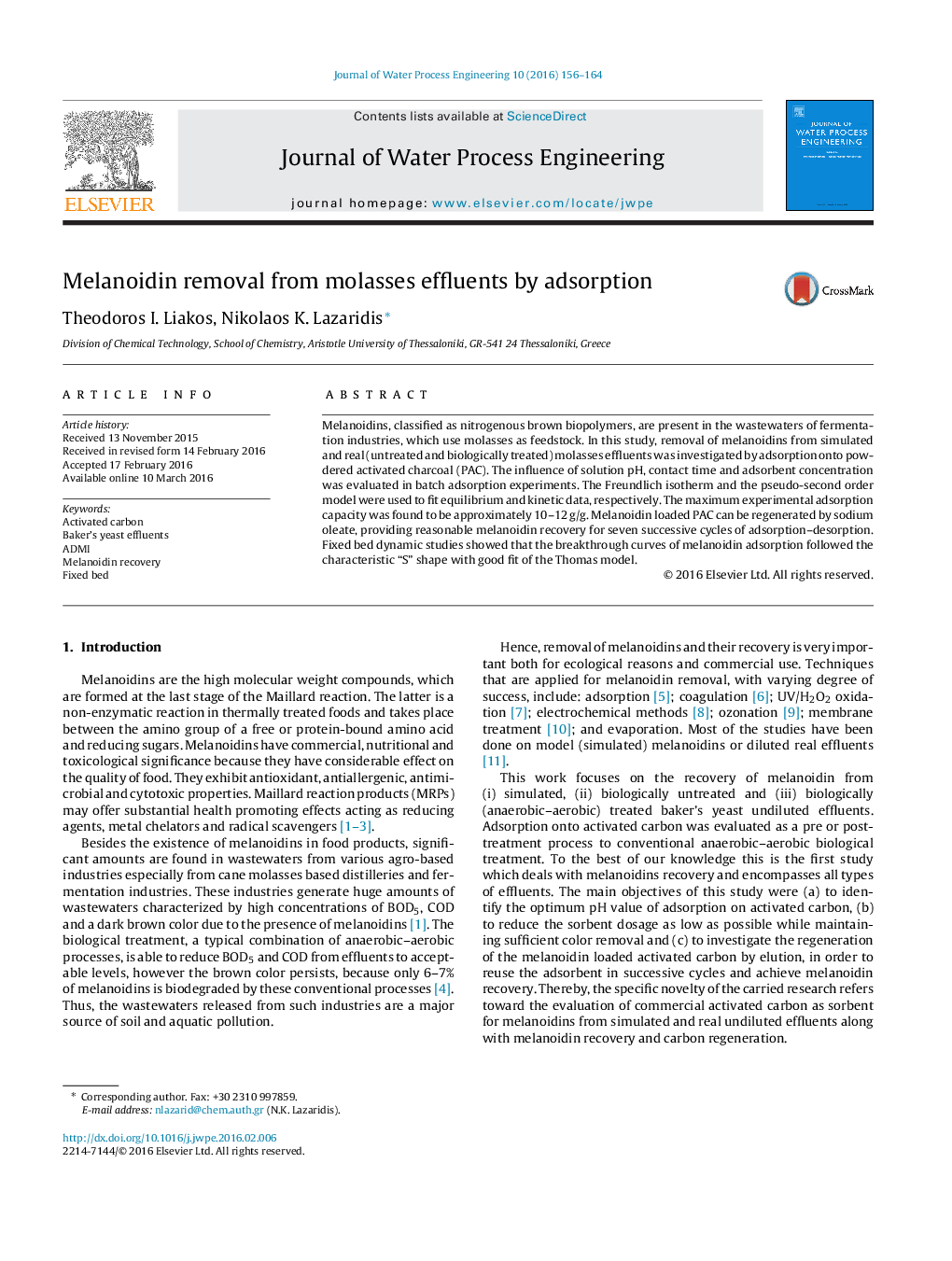| Article ID | Journal | Published Year | Pages | File Type |
|---|---|---|---|---|
| 232460 | Journal of Water Process Engineering | 2016 | 9 Pages |
Melanoidins, classified as nitrogenous brown biopolymers, are present in the wastewaters of fermentation industries, which use molasses as feedstock. In this study, removal of melanoidins from simulated and real (untreated and biologically treated) molasses effluents was investigated by adsorption onto powdered activated charcoal (PAC). The influence of solution pH, contact time and adsorbent concentration was evaluated in batch adsorption experiments. The Freundlich isotherm and the pseudo-second order model were used to fit equilibrium and kinetic data, respectively. The maximum experimental adsorption capacity was found to be approximately 10–12 g/g. Melanoidin loaded PAC can be regenerated by sodium oleate, providing reasonable melanoidin recovery for seven successive cycles of adsorption–desorption. Fixed bed dynamic studies showed that the breakthrough curves of melanoidin adsorption followed the characteristic “S” shape with good fit of the Thomas model.
